Technology
What is Snapdragon Sound? The Bluetooth audio tech explained
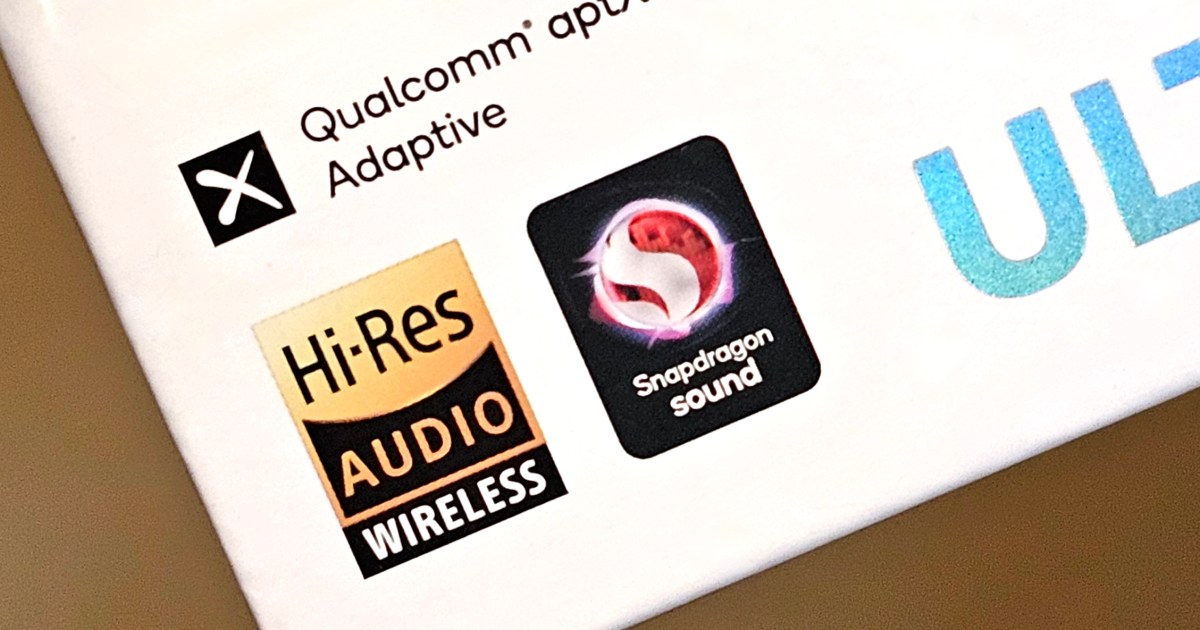
So, you’re checking out a pair of headphones online or at your local Best Buy and its got this swooshy red-and-white logo in the description that says “Snapdragon Sound,” and you wonder, “huh, what is that?” Then you see your new Android smartphone has the same logo. The plot thickens. What does it all mean?
In a world where the advanced features of our wireless headphones or earbuds rely on matching capabilities within our smartphones (which the phones may or may not have), Qualcomm’s Snapdragon Sound is an attempt to bring order to the chaos. It’s a promise that things will just work as long as all of your products bear the same Snapdragon Sound logo. Or at least that’s the idea.
But what exactly is Snapdragon Sound, and does it really eliminate compatibility concerns? Let’s dive into everything you need to know.
Codec confusion
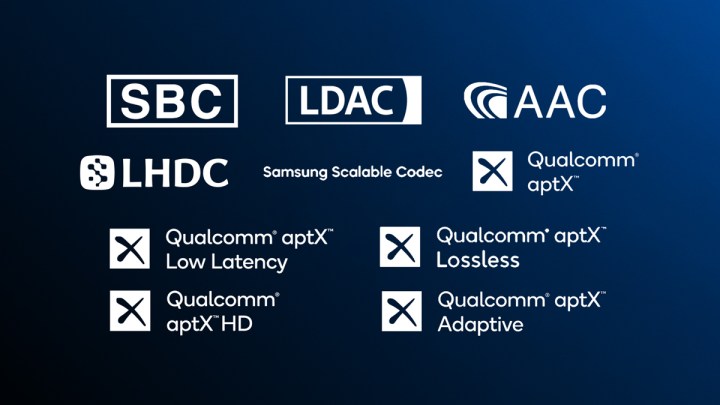
Before we get into what Snapdragon Sound is, let’s quickly recap what led to the creation of this brand. It started with Bluetooth audio codecs — the algorithms responsible for transporting audio wirelessly.
Bluetooth audio codecs are at once a brilliant technology, and a royal pain in the butt. Without audio codecs, we wouldn’t be able to use Bluetooth to listen to anything — uncompressed music is just too big to fit inside the limited bandwidth of a Bluetooth connection.
As long as your phone (or computer or tablet) and your headphones (or earbuds or speaker) are both equipped with the same codec, they’ll work just fine together. If it’s not in both places, it’s like a language that only one device knows how to speak.
Decades ago, at the dawn of Bluetooth audio, this wasn’t an issue. There was just one audio codec —called SBC — and every Bluetooth audio device supported it. They were (and still are) required to support it if they want to participate in the Bluetooth audio ecosystem.
However, SBC is a bare-bones codec. It was born long before smartphones could stream lossless, hi-res audio from anywhere in the world, in a time when highly compressed MP3s ruled the portable audio landscape. If you use SBC to listen to lossless or hi-res audio, a significant amount of detail will be lost.
Over the years, various entities like Sony, Qualcomm, Samsung, and Fraunhofer IIS have steadily introduced new audio codecs, each of which promised improvements over SBC. As of 2024, there are more than 14 of them, and several are designed to preserve far more of the high-quality audio we now have access to.
With that expansion of the Bluetooth codec universe came compatibility problems. Since Bluetooth audio devices aren’t required to support these better-than-SBC codecs, it has fallen to buyers to check that both of their chosen devices support the same ones.
All about aptX

This issue became particularly problematic for companies that chose to use Qualcomm’s family of aptX codecs. There are now five “flavors” of aptX: Classic aptX came first, followed by aptX HD, then aptX Low Latency (aptX LL) and aptX Adaptive. Most recently, Qualcomm added aptX Lossless.
We won’t get into the differences between these aptX flavors here, but if you’re curious, check out our in-depth Qualcomm aptX explainer — it has all of the answers.
Newer aptX-capable headphones and earbuds usually support aptX Adaptive, which is backward-compatible with classic aptX and aptX HD. However, even though all Android phones running Android 8.0 or higher support aptX and aptX HD, aptX Adaptive and aptX Lossless are only available on select Android phones that use Qualcomm’s processors. Some aptX Adaptive products are limited to 48kHz sampling rates, while others can support up to 96kHz.
Meanwhile, aptX Low Latency is incompatible with the antenna structure on phones, so the only way to take advantage of it is via a USB dongle or other third-party device. And aptX HD? You’ll find it on Bluetooth headphones, but only a tiny number of true wireless earbuds provide it, due to reliability issues.
To make matters even more confusing, Apple has never supported Qualcomm’s aptX family on its iPhones.
The worst part about this codec chaos is that, as a humble buyer of these devices, you may not even realize it when hardware incompatibility has robbed you of the benefits of these new codecs. Since SBC is always present, you’ll still get audio on your chosen headphones. Just not at the level of audio quality you thought you were going to get.
Snapdragon Sound — one brand to rule them all?
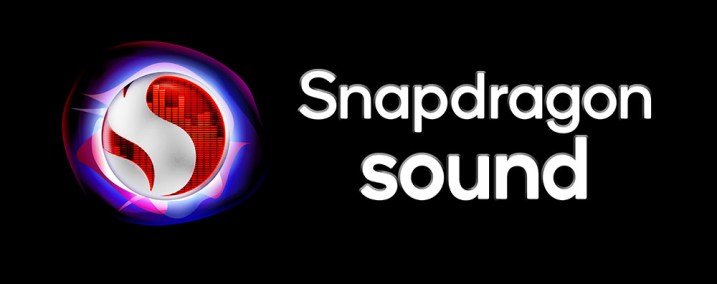
Qualcomm eventually realized it couldn’t rely on manufacturers and buyers to ensure that aptX-equipped products were being purchased and used in ways that would guarantee compatibility, and thus deliver on the lofty expectations set by the promise of better codecs.
It decided that a single, catchy brand was the answer and created the Snapdragon Sound program. The name strongly suggests that this is yet another codec or technology (kind of like the “Intel Inside” marketing campaign from the 1990s), but it’s not.
Instead, it’s intended to signify when two products will work together reliably and with a certain set of guaranteed features. If you see “Snapdragon Sound” on a set of earbuds and on a smartphone, you can breathe a sigh of relief, knowing that they will “just work.”
Or at least that’s how it began.
In 2021, when Snapdragon Sound was officially launched, it was with a guarantee of five key features, which had all been tested and certified to work by Qualcomm:
- AptX Adaptive at 24-bit/48kHz
- AptX Adaptive at 24-bit/96kHz
- Low latency mode when gaming
- AptX Voice (super wideband voice) when on a call
- Qualcomm Bluetooth High Speed link
These five features meant that your Snapdragon Sound combo would deliver the best possible audio and call quality, with low latency — similar to that of aptX LL — when needed.
The concept, while foreign to buyers who were by now getting used to the idea of scanning specs to find the codecs they wanted, was a good one.
The many flavors of Snapdragon Sound
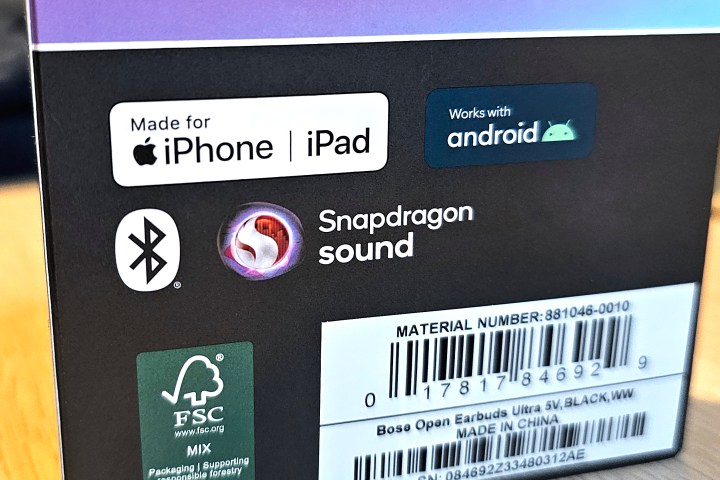
Then things began to change. In early 2022, Qualcomm introduced aptX Lossless, a codec that can deliver bit-perfect CD-quality audio at 16-bit/44.1 kHz — a first for the Bluetooth audio world. AptX Lossless was (and still is) an exclusive feature of Snapdragon Sound, but it’s an optional feature.
In other words, some Snapdragon Sound phones and wireless audio products support aptX Lossless and some don’t. Qualcomm elected to keep the Snapdragon Sound brand unchanged. It didn’t add a version number or a tag to indicate the presence of aptX Lossless, e.g. “Snapdragon Sound Plus” or “Snapdragon Sound 2.0,” which meant that for aptX Lossless, manufacturers and buyers were right back to checking product specs.
Near the end of 2022, the company announced it was expanding Snapdragon Sound further, with the addition of head-tracked spatial audio, an enhanced version of aptX Lossless that goes up to 48kHz, and improved latency with backchannel voice for in-game experiences.
Once again, it chose to make these optional for Snapdragon Sound participants.
Then, at some point during 2024 — Qualcomm won’t say exactly when — it quietly changed the original five Snapdragon Sound features (the ones that were supposed to be the minimum on any Snapdragon Sound-branded product).
As of the fall of 2024, Snapdragon Sound products must support:
Either
- AptX Adaptive at 24-bit/96kHz
Or
Plus:
- Low Latency Gaming mode
- Qualcomm High Speed link
The following features are optional add-ons:
- aptX Voice (super wideband voice)
- Head-tracked spatial audio
- Stereo recording
And despite this significant restructuring of mandatory versus optional features, the Snapdragon Sound name and logo have remained the same since they debuted. Qualcomm expects each manufacturer to specify the features their products support.
When, in 2022, it looked like Qualcomm would simply expand the number of features under the Snapdragon Sound brand, there was something of a silver lining. Your new aptX Lossless Snapdragon Sound headphones might not give you aptX Lossless if you used them with an older Snapdragon Sound phone, but they would still be backward compatible with the five previous Snapdragon Sound features.
Unfortunately, in shifting the mandatory features, Qualcomm has degraded that promise of backward compatibility. Take the Bowers & Wilkins Pi8 wireless earbuds as an example. They bear the Snapdragon Sound brand and they feature aptX, aptX Adaptive, and aptX Lossless, however they don’t support aptX Voice.
Fragmentation frustration
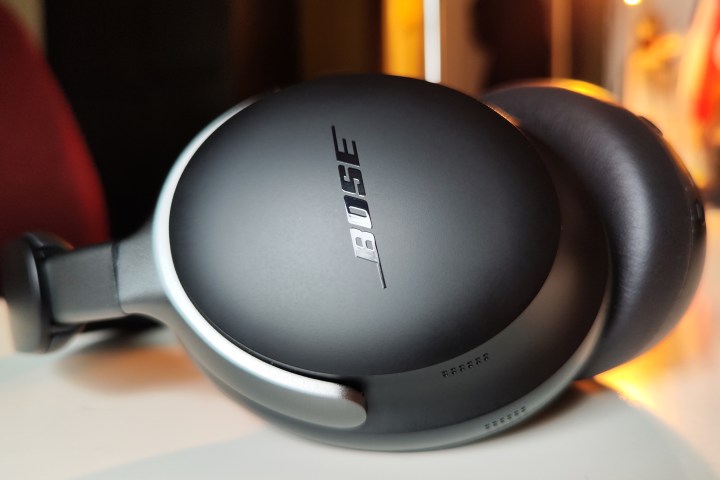
Today’s Snapdragon Sound landscape looks a lot like the pre-Snapdragon Sound era. If you want to know which features a Snapdragon Sound product offers, you’ll need to pay close attention to the specifications.
Qualcomm’s aptX website remains the only resource that we’re aware of that lists all available Snapdragon Sound products. Its database can be filtered by product type (wireless earbuds, headphones, smartphones, tablets, speakers, and transmitters/receivers) and by aptX flavor (including Snapdragon Sound).
The only problem is that it hasn’t kept pace with the changing Snapdragon Sound feature set. You can see Snapdragon Sound products and those that additionally offer aptX Lossless, but there’s no way to filter by Qualcomm’s newer optional features like spatial audio. Perhaps more importantly, there’s no way to filter for previously mandatory features like aptX Voice.
For a North American audience, the Snapdragon Sound landscape is tricky.
There are now several decent options in both wireless earbuds and wireless headphones, from brands like Sennheiser, Bose, Shure, Denon, and Earfun. Many are priced above $300, but some cost less than $100.
Smartphones are a different story. As we indicated earlier, there are no Snapdragon Sound iPhones. Google’s Pixel phones aren’t Snapdragon Sound compatible and neither are Samsung’s. The only companies we can find with Snapdragon Sound models are Motorola, Nothing, and Sony.
Elsewhere in the world, the selection is better: Xiaomi, Asus, Sony, ZTE, Vivo, Nubia, Sharp, and BlackShark.
Is it easier to buy wireless audio products now that we have Qualcomm’s Snapdragon Sound program? Perhaps. It’s certainly easier to identify the products that will deliver some of Qualcomm’s aptX benefits, like hi-res or lossless audio.
But as a true it-just-works brand that alleviates us from the need of scouring specifications? Sadly, it’s still very much buyer beware.
Technology
Audeze partners with APL for Maxwell head-tracking integration
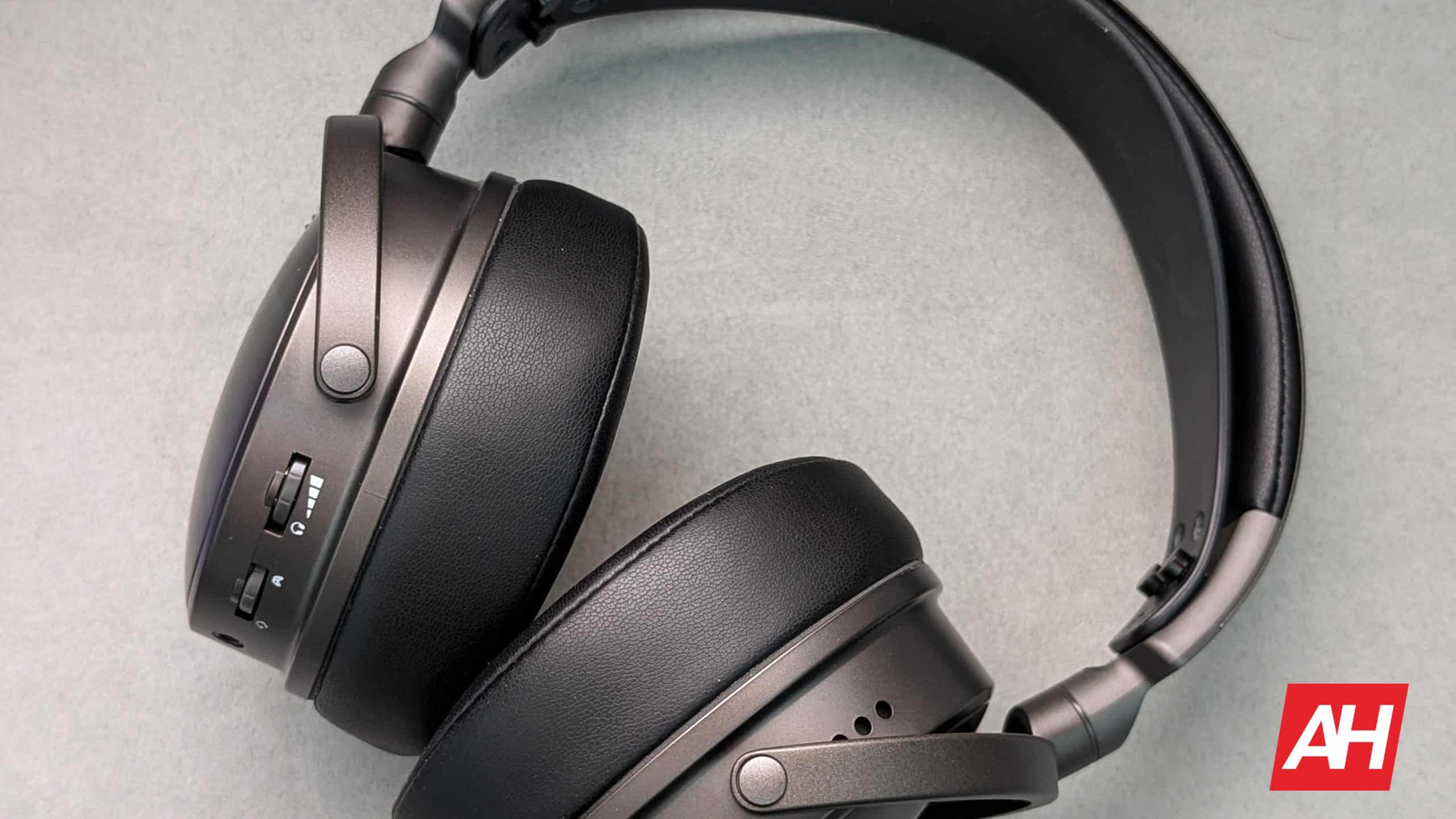
The Audeze Maxwell headset is best known for its prestige as one of the best gaming headsets around, but this week Audeze announced a new partnership with APL (Applied Psychoacoustics Lab) to integrate its head-tracking tech that has the potential to open the Maxwell up to uses beyond gaming.
Through this new partnership, the head-tracking technology that’s already integrated into the Maxwell headset will be compatible with APL’s Virtuoso V2 audio plugin and standalone app. With this new integration, it’ll now be easier to create even more expansive spatial audio experiences through the use of the Virtuoso V2 binaural rendering tool.
Audeze says this will expand the possibilities for spatial audio content creation for professionals. As the Virtuoso V2 compatibility will make use of the Audeze Maxwell’s high-quality audio components. Such as the planar magnetic drivers and the integrated head-tracking. It might seem weird to think about the Audeze Maxwell headset outside the realm of gaming. However, you have to remember that at the end of the day, it is still essentially a pair of high-quality wireless headphones with a detachable mic.
With Audeze’s expertise in the audio field, it makes perfect sense for it to partner with a company that makes tools for mixing professionals. And now those professionals will be able to create even more immersive audio experiences.
The Audeze Maxwell head-tracking capabilities allow for “precise control”
Head-tracking is truly a special thing to experience when it comes to audio and it’s something that everyone should experience at least once in their life. That’s sort of where the beauty of this partnership starts to form. APL Founder Hyunkook Lee says that by integrating the Maxwell’s head-tracking technology, “both Virtuoso and Maxwell users will now enjoy an even more immersive and lifelike listening experience.”
That means you’ll start seeing (or rather hearing) more content that takes advantage of the head-tracking technology in the Maxwell headset. This will both bring more audio experiences to life and expand the range of what audio professionals can do with the Virtuoso V2 tool.
Audeze is demonstrating the integration at AES
For professionals who are attending the AES show in New York City this week, Audeze is demonstrating the integration. The show started on October 8 and goes through today, October 10. The company is also hosting in-booth sessions with Grammy award-winning recording engineers and artists. While this doesn’t really translate to the Maxwell’s foremost use case, it does at least put the spotlight on what the Maxwell headset can do for gamers.
That is, it highlights the immersive sound quality that it offers. If it’s good enough for professional audio engineers and mixers, imagine what it can do for your gaming experience.
Servers computers
Eaton Network Racks Unboxing 27U by Neha Energy Solutions
Technology
Porsche recalls more than 27,000 Taycan EVs
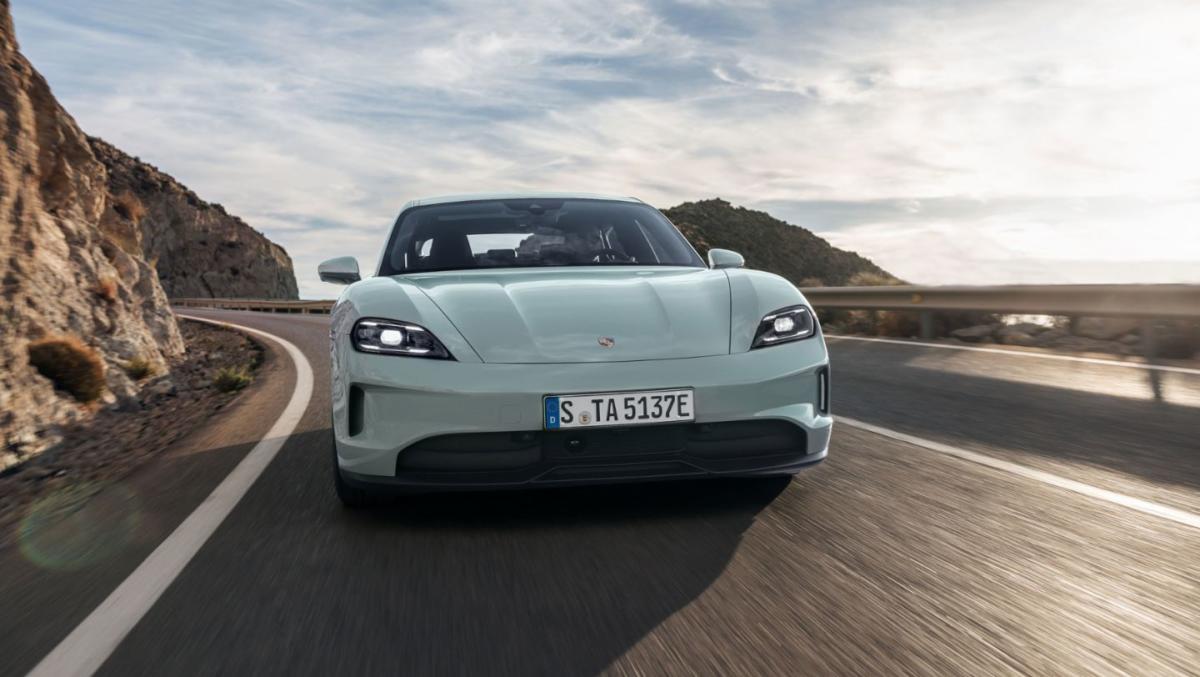
If you own a Porsche Taycan, you might plan on making a trip to the dealership. The Verge reported that recalls have been issued due to a short circuiting risk in one of the battery’s cell block modules. The National Highway Traffic Safety Administration issued a safety recall for more than 27,000 of the Porsche EVs. The recall affects “certain” Taycan vehicles released from 2021-2024. Notices will be issued to owners by the end of November.
Porsche hasn’t been able to pinpoint exactly which cars in the Taycan fleet have the hazard. In order to determine which cars need fixing, Porsche is advising owners of Taycans made between October 21, 2019 and February 1, 2024 to bring their car to a dealership where crews can monitor the battery with diagnostic software. Porsche is also advising its Taycan owners to only charge the vehicle’s battery up to 80 percent until dealership mechanics can determine if the battery needs to be replaced.
If this problem sounds familiar, it’s because it’s one of the chief causes for the downfall of Chevrolet’s EV, the Chevy Bolt. The electric car went through a similar recall in 2021 due to a fire risk with the battery.
Chevy had to replace the batteries in Bolts made between 2017 and 2019 at a cost of $1.8 billion. The battery issues led to Chevy discontinuing the EV line and a class-action settlement that netted owners of the 2020-2022 Bolt EVs and EUVs a $1,400 settlement.
Servers computers
Serverstack.in- Buy Rack Server|Tower Servers|Asus Servers

Serverstack. India’s #1 Trusted Server Company, Buy Servers at best Rates , Rack Servers , Asus Server,Tower Server, Storage Servers Customize Your Server At Best Rate
visit- https://www.serverstack.in
Build Your Own Server -https://www.serverstack.in/calculate/
1u Rack Servers- https://www.serverstack.in/1u-servers-rackserver/ .
source
Technology
Sunderfolk is the new game from Dreamhaven and Secret Door


Mike Morhaime’s Dreamhaven and Secret Door are making a new tactical RPG called Sunderfolk, launching in 2025.Read More
Technology
SpaceX alums are working to raise a hefty $550M first deep tech fund
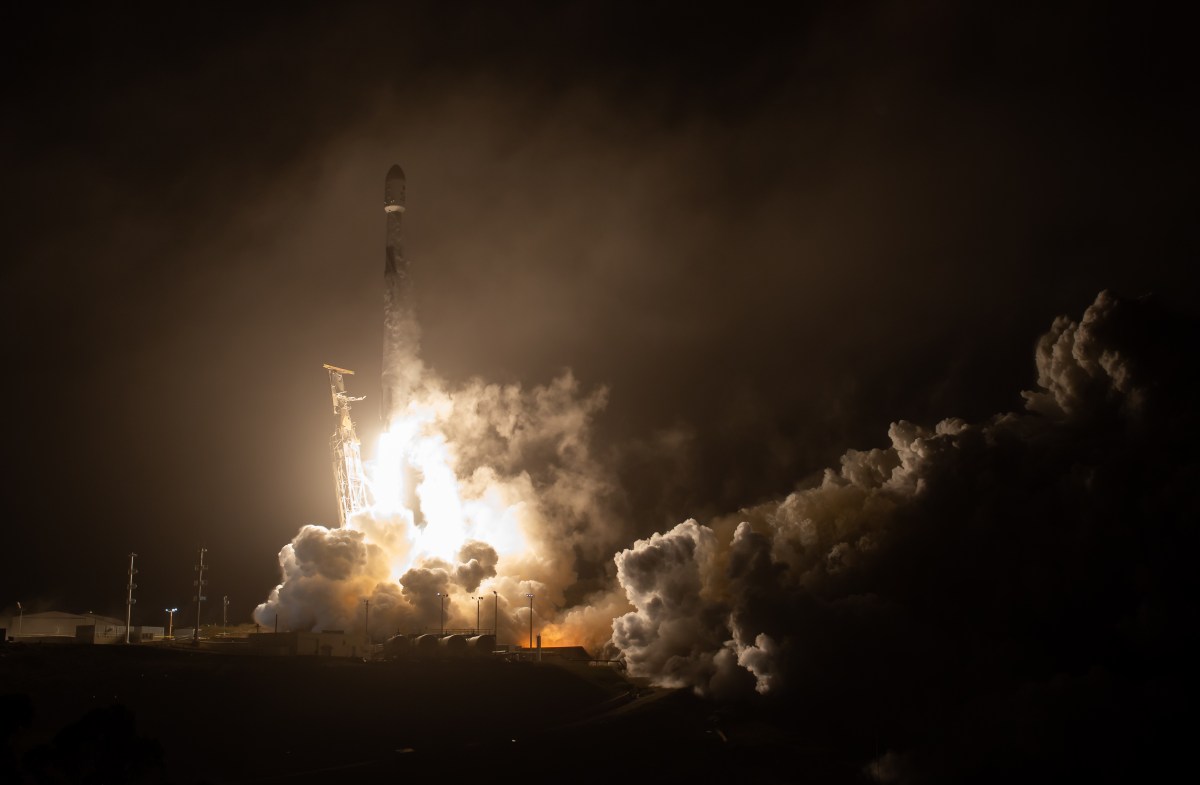
Interlagos, the venture capital firm started by former senior SpaceX leaders, is looking to raise $550 million for its first venture fund, according to regulatory filings and a confidential deck sent to prospective LPs and viewed by TechCrunch.
The existence of the firm was first reported by TechCrunch in April, but almost nothing has been publicly disclosed about its prospective investment thesis — until now. El Segundo-based Interlagos is broadly targeting startups across “deep tech” sectors, someone familiar with the firm’s plans said. The firm will provide capital from inception through Series B, with the targeted $550 million to be deployed across 26-32 investments, the deck says.
It’s a massive target for a first-time fund, which the team recognizes. “We are sized to lead and be persistent capital partners to leading companies,” the pitch deck says.
While the filing does not yet list how much money the partners have secured to date, a source familiar with the matter says that the firm has made a first close for a chunk of that $550M target. Prospective LPs are no doubt drawn to the bona fides of the founding team, which includes Achal Upadhyaya, who was a senior engineer at SpaceX for a decade before leading investments in space and defense at Cantos Ventures; Tom Ochinero, a former high-ranking SpaceX executive who left the company in March after a ten-year stint; and Spencer Hemphill, Interlagos’ CFO who was a former Sequoia finance leader.
The general partners will also have their own skin in the game — which is a common structure for VC firms. They have each pledged to invest a 2% general partner “commit”, the deck says, which refers to their own personal money they will commit to the fund as investors. The rest of the fund’s terms look industry standard as well: 2% management fees, 20-25% carry meaning how much the fund will keep of its returns, pursuit of deals that will give it 18-25% stakes in the startups it backs.
Ochinero, who reported directly to SpaceX President Gwynne Shotwell, was “personally responsible for over a billion dollars of annual revenue” at the company, according to a bio published in 2023. Upadhyaya in particular has a sweeping track record into deep tech startups as an angel and VC, according to the deck: He led the first investments into unmanned defense systems startup Neros Technologies and quantum mechanics startup SoloPulse, and the seed rounds into Shinkei Systems and Pilgrim, in his role at Cantos. His personal investments include Base Power, composites startup Layup, and Oxide Computer.
Upadhyaya did not respond to TechCrunch’s request for comment by publication time.
Deep tech, a umbrella term that can include sectors like space, manufacturing, robotics, biotech, AI and more, has seen a surge of VC interest in recent years. Deep tech companies require more upfront capital and tend to have longer exit timelines, which has led to an increase in specialist funds, often composed of technical partners. But still, if Interlagos manages to raise the full targeted amount, it would make it an exception to the recent downturn in VC that has made raising capital harder. It will also likely set the firm up to successfully compete against mega-funds like Founders Fund and Andreessen Horowitz, which have aggressively moved into the earliest stages in deep tech VC deals.
-

 Science & Environment3 weeks ago
Science & Environment3 weeks agoHyperelastic gel is one of the stretchiest materials known to science
-

 Science & Environment3 weeks ago
Science & Environment3 weeks agoHow to unsnarl a tangle of threads, according to physics
-

 Womens Workouts2 weeks ago
Womens Workouts2 weeks ago3 Day Full Body Women’s Dumbbell Only Workout
-

 Technology3 weeks ago
Technology3 weeks agoWould-be reality TV contestants ‘not looking real’
-

 Science & Environment3 weeks ago
Science & Environment3 weeks agoMaxwell’s demon charges quantum batteries inside of a quantum computer
-

 Science & Environment3 weeks ago
Science & Environment3 weeks ago‘Running of the bulls’ festival crowds move like charged particles
-
News3 weeks ago
the pick of new debut fiction
-

 Science & Environment3 weeks ago
Science & Environment3 weeks agoITER: Is the world’s biggest fusion experiment dead after new delay to 2035?
-

 Science & Environment3 weeks ago
Science & Environment3 weeks agoHow to wrap your mind around the real multiverse
-

 Science & Environment3 weeks ago
Science & Environment3 weeks agoSunlight-trapping device can generate temperatures over 1000°C
-

 Science & Environment3 weeks ago
Science & Environment3 weeks agoQuantum ‘supersolid’ matter stirred using magnets
-

 Science & Environment3 weeks ago
Science & Environment3 weeks agoLiquid crystals could improve quantum communication devices
-

 News3 weeks ago
News3 weeks agoOur millionaire neighbour blocks us from using public footpath & screams at us in street.. it’s like living in a WARZONE – WordupNews
-

 Science & Environment3 weeks ago
Science & Environment3 weeks agoQuantum forces used to automatically assemble tiny device
-

 Science & Environment3 weeks ago
Science & Environment3 weeks agoWhy this is a golden age for life to thrive across the universe
-

 Science & Environment3 weeks ago
Science & Environment3 weeks agoNerve fibres in the brain could generate quantum entanglement
-

 Science & Environment3 weeks ago
Science & Environment3 weeks agoPhysicists are grappling with their own reproducibility crisis
-

 Science & Environment3 weeks ago
Science & Environment3 weeks agoTime travel sci-fi novel is a rip-roaringly good thought experiment
-

 Science & Environment3 weeks ago
Science & Environment3 weeks agoLaser helps turn an electron into a coil of mass and charge
-

 Science & Environment3 weeks ago
Science & Environment3 weeks agoNuclear fusion experiment overcomes two key operating hurdles
-

 Science & Environment2 weeks ago
Science & Environment2 weeks agoX-rays reveal half-billion-year-old insect ancestor
-
Business2 weeks ago
Eurosceptic Andrej Babiš eyes return to power in Czech Republic
-

 News4 weeks ago
News4 weeks ago▶️ Hamas in the West Bank: Rising Support and Deadly Attacks You Might Not Know About
-

 Science & Environment3 weeks ago
Science & Environment3 weeks agoCaroline Ellison aims to duck prison sentence for role in FTX collapse
-

 News3 weeks ago
News3 weeks agoYou’re a Hypocrite, And So Am I
-

 Sport3 weeks ago
Sport3 weeks agoJoshua vs Dubois: Chris Eubank Jr says ‘AJ’ could beat Tyson Fury and any other heavyweight in the world
-

 Science & Environment3 weeks ago
Science & Environment3 weeks agoA slight curve helps rocks make the biggest splash
-

 News3 weeks ago
News3 weeks ago▶️ Media Bias: How They Spin Attack on Hezbollah and Ignore the Reality
-

 Technology2 weeks ago
Technology2 weeks ago‘From a toaster to a server’: UK startup promises 5x ‘speed up without changing a line of code’ as it plans to take on Nvidia, AMD in the generative AI battlefield
-

 Football2 weeks ago
Football2 weeks agoFootball Focus: Martin Keown on Liverpool’s Alisson Becker
-

 News3 weeks ago
News3 weeks agoNew investigation ordered into ‘doorstep murder’ of Alistair Wilson
-

 Science & Environment3 weeks ago
Science & Environment3 weeks agoRethinking space and time could let us do away with dark matter
-
Business2 weeks ago
Should London’s tax exiles head for Spain, Italy . . . or Wales?
-

 MMA2 weeks ago
MMA2 weeks agoConor McGregor challenges ‘woeful’ Belal Muhammad, tells Ilia Topuria it’s ‘on sight’
-

 Science & Environment3 weeks ago
Science & Environment3 weeks agoA new kind of experiment at the Large Hadron Collider could unravel quantum reality
-

 Science & Environment3 weeks ago
Science & Environment3 weeks agoFuture of fusion: How the UK’s JET reactor paved the way for ITER
-

 Technology2 weeks ago
Technology2 weeks agoIs sharing your smartphone PIN part of a healthy relationship?
-

 Science & Environment3 weeks ago
Science & Environment3 weeks agoWhy we need to invoke philosophy to judge bizarre concepts in science
-

 Science & Environment3 weeks ago
Science & Environment3 weeks agoA tale of two mysteries: ghostly neutrinos and the proton decay puzzle
-

 Science & Environment3 weeks ago
Science & Environment3 weeks agoUK spurns European invitation to join ITER nuclear fusion project
-

 News3 weeks ago
News3 weeks agoIsrael strikes Lebanese targets as Hizbollah chief warns of ‘red lines’ crossed
-

 Technology2 weeks ago
Technology2 weeks agoQuantum computers may work better when they ignore causality
-

 CryptoCurrency3 weeks ago
CryptoCurrency3 weeks agoCardano founder to meet Argentina president Javier Milei
-
News3 weeks ago
The Project Censored Newsletter – May 2024
-

 News3 weeks ago
News3 weeks agoWhy Is Everyone Excited About These Smart Insoles?
-

 Science & Environment3 weeks ago
Science & Environment3 weeks agoMeet the world's first female male model | 7.30
-

 News3 weeks ago
News3 weeks agoFour dead & 18 injured in horror mass shooting with victims ‘caught in crossfire’ as cops hunt multiple gunmen
-

 Womens Workouts2 weeks ago
Womens Workouts2 weeks ago3 Day Full Body Toning Workout for Women
-

 Technology2 weeks ago
Technology2 weeks agoRobo-tuna reveals how foldable fins help the speedy fish manoeuvre
-

 Technology2 weeks ago
Technology2 weeks agoGet ready for Meta Connect
-

 Health & fitness2 weeks ago
Health & fitness2 weeks agoThe 7 lifestyle habits you can stop now for a slimmer face by next week
-

 Sport2 weeks ago
Sport2 weeks agoWatch UFC star deliver ‘one of the most brutal knockouts ever’ that left opponent laid spark out on the canvas
-

 Technology3 weeks ago
Technology3 weeks agoThe ‘superfood’ taking over fields in northern India
-

 Health & fitness3 weeks ago
Health & fitness3 weeks agoThe maps that could hold the secret to curing cancer
-

 Health & fitness3 weeks ago
Health & fitness3 weeks agoThe secret to a six pack – and how to keep your washboard abs in 2022
-

 Science & Environment3 weeks ago
Science & Environment3 weeks agoBeing in two places at once could make a quantum battery charge faster
-

 CryptoCurrency3 weeks ago
CryptoCurrency3 weeks agoLow users, sex predators kill Korean metaverses, 3AC sues Terra: Asia Express
-
Politics3 weeks ago
UK consumer confidence falls sharply amid fears of ‘painful’ budget | Economics
-

 Womens Workouts3 weeks ago
Womens Workouts3 weeks agoBest Exercises if You Want to Build a Great Physique
-

 Womens Workouts3 weeks ago
Womens Workouts3 weeks agoEverything a Beginner Needs to Know About Squatting
-

 TV3 weeks ago
TV3 weeks agoCNN TÜRK – 🔴 Canlı Yayın ᴴᴰ – Canlı TV izle
-

 Science & Environment3 weeks ago
Science & Environment3 weeks agoCNN TÜRK – 🔴 Canlı Yayın ᴴᴰ – Canlı TV izle
-

 Servers computers2 weeks ago
Servers computers2 weeks agoWhat are the benefits of Blade servers compared to rack servers?
-

 Technology2 weeks ago
Technology2 weeks agoThe best robot vacuum cleaners of 2024
-
Business1 week ago
Ukraine faces its darkest hour
-
Business3 weeks ago
JPMorgan in talks to take over Apple credit card from Goldman Sachs
-

 Science & Environment3 weeks ago
Science & Environment3 weeks agoQuantum time travel: The experiment to ‘send a particle into the past’
-

 CryptoCurrency3 weeks ago
CryptoCurrency3 weeks agoBitcoin miners steamrolled after electricity thefts, exchange ‘closure’ scam: Asia Express
-

 CryptoCurrency3 weeks ago
CryptoCurrency3 weeks agoDorsey’s ‘marketplace of algorithms’ could fix social media… so why hasn’t it?
-

 CryptoCurrency3 weeks ago
CryptoCurrency3 weeks agoDZ Bank partners with Boerse Stuttgart for crypto trading
-

 CryptoCurrency3 weeks ago
CryptoCurrency3 weeks agoBitcoin bulls target $64K BTC price hurdle as US stocks eye new record
-

 Science & Environment3 weeks ago
Science & Environment3 weeks agoHow one theory ties together everything we know about the universe
-

 News3 weeks ago
News3 weeks agoChurch same-sex split affecting bishop appointments
-

 Science & Environment3 weeks ago
Science & Environment3 weeks agoTiny magnet could help measure gravity on the quantum scale
-

 CryptoCurrency3 weeks ago
CryptoCurrency3 weeks agoBlockdaemon mulls 2026 IPO: Report
-

 Sport3 weeks ago
Sport3 weeks agoUFC Edmonton fight card revealed, including Brandon Moreno vs. Amir Albazi headliner
-

 CryptoCurrency3 weeks ago
CryptoCurrency3 weeks agoEthereum is a 'contrarian bet' into 2025, says Bitwise exec
-

 CryptoCurrency3 weeks ago
CryptoCurrency3 weeks agoCoinbase’s cbBTC surges to third-largest wrapped BTC token in just one week
-

 News2 weeks ago
News2 weeks agoUS Newspapers Diluting Democratic Discourse with Political Bias
-

 Politics3 weeks ago
Politics3 weeks agoTrump says he will meet with Indian Prime Minister Narendra Modi next week
-

 CryptoCurrency3 weeks ago
CryptoCurrency3 weeks agoDecentraland X account hacked, phishing scam targets MANA airdrop
-

 Science & Environment3 weeks ago
Science & Environment3 weeks agoPhysicists have worked out how to melt any material
-

 CryptoCurrency3 weeks ago
CryptoCurrency3 weeks agoRedStone integrates first oracle price feeds on TON blockchain
-

 CryptoCurrency3 weeks ago
CryptoCurrency3 weeks ago‘No matter how bad it gets, there’s a lot going on with NFTs’: 24 Hours of Art, NFT Creator
-

 Science & Environment3 weeks ago
Science & Environment3 weeks agoHow do you recycle a nuclear fusion reactor? We’re about to find out
-
Business3 weeks ago
Thames Water seeks extension on debt terms to avoid renationalisation
-
Business3 weeks ago
How Labour donor’s largesse tarnished government’s squeaky clean image
-
Politics3 weeks ago
‘Appalling’ rows over Sue Gray must stop, senior ministers say | Sue Gray
-

 Technology3 weeks ago
Technology3 weeks agoiPhone 15 Pro Max Camera Review: Depth and Reach
-

 News3 weeks ago
News3 weeks agoBrian Tyree Henry on voicing young Megatron, his love for villain roles
-

 News3 weeks ago
News3 weeks agoBrian Tyree Henry on voicing young Megatron, his love for villain roles
-

 MMA3 weeks ago
MMA3 weeks agoRankings Show: Is Umar Nurmagomedov a lock to become UFC champion?
-

 Travel2 weeks ago
Travel2 weeks agoDelta signs codeshare agreement with SAS
-

 Politics2 weeks ago
Politics2 weeks agoHope, finally? Keir Starmer’s first conference in power – podcast | News
-

 News4 weeks ago
News4 weeks agoHow FedEx CEO Raj Subramaniam Is Adapting to a Post-Pandemic Economy
-

 CryptoCurrency3 weeks ago
CryptoCurrency3 weeks agoLouisiana takes first crypto payment over Bitcoin Lightning
-

 CryptoCurrency3 weeks ago
CryptoCurrency3 weeks agoCrypto scammers orchestrate massive hack on X but barely made $8K
-

 CryptoCurrency3 weeks ago
CryptoCurrency3 weeks agoTelegram bot Banana Gun’s users drained of over $1.9M
-

 Science & Environment3 weeks ago
Science & Environment3 weeks agoMost accurate clock ever can tick for 40 billion years without error
-

 CryptoCurrency3 weeks ago
CryptoCurrency3 weeks agoSEC asks court for four months to produce documents for Coinbase

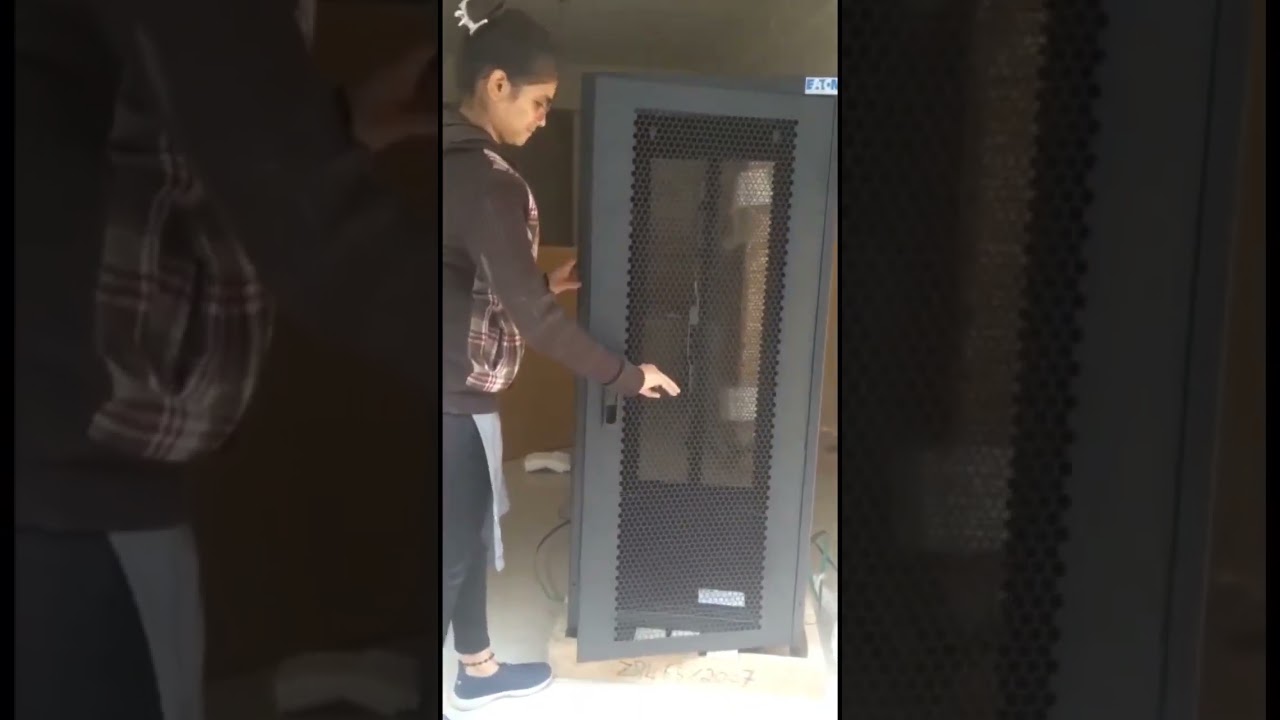
You must be logged in to post a comment Login